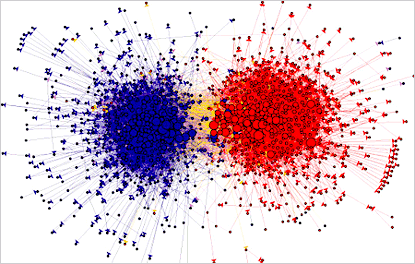
SIR DIWA MALAYA.
SALAMAT.

Sa Pasensya
Sa Considerations
Sa Talento
Sa Mga Mahihirap ng Essay Exam
 Sa Mga Exam Foods
Sa Mga Exam FoodsSa Mga Bonus Points
 Sa Haggard na Paper Requirements
Sa Haggard na Paper RequirementsSa Quizzes
Sa Pagiging Game Sa Kalokohan
Sa Lahat Lahat. OMG.
Senti Mode.

 Kami ay Super Happy Kami sa Class Niyo.:)
Kami ay Super Happy Kami sa Class Niyo.:)
hahahhha:) Super senti na song. Woot Woot!:)
At ang SONG NAMIN PARA SA INYO AY:)
PARTY and PARTY and YEAH
FUN FUN FUN.
we we we so excited
we we we so excited
Friday - Rebecca Black Lyrics
(Yeah, Ah-Ah-Ah-Ah-Ah-Ark)
Oo-ooh-ooh, hoo yeah, yeah
Yeah, yeah
Yeah-ah-ah
Yeah-ah-ah
Yeah-ah-ah
Yeah-ah-ah
Yeah, yeah, yeah
[Rebecca Black - Verse 1]
7am, waking up in the morning
Gotta be fresh, gotta go downstairs
Gotta have my bowl, gotta have cereal
Seein’ everything, the time is goin’
Tickin’ on and on, everybody’s rushin’
Gotta get down to the bus stop
Gotta catch my bus, I see my friends (My friends)
Kickin’ in the front seat
Sittin’ in the back seat
Gotta make my mind up
Which seat can I take?
It’s Friday, Friday
Gotta get down on Friday
Everybody’s lookin’ forward to the weekend, weekend
Friday, Friday
Gettin’ down on Friday
Everybody’s lookin’ forward to the weekend
Partyin’, partyin’ (Yeah)
Partyin’, partyin’ (Yeah)
Fun, fun, fun, fun
Lookin’ forward to the weekend
[Rebecca Black - Verse 2]
7:45, we’re drivin’ on the highway
Cruisin’ so fast, I want time to fly
Fun, fun, think about fun
You know what it is
I got this, you got this
My friend is by my right
I got this, you got this
Now you know it
Kickin’ in the front seat
Sittin’ in the back seat
Gotta make my mind up
Which seat can I take?
[Chorus]
It’s Friday, Friday
Gotta get down on Friday
Everybody’s lookin’ forward to the weekend, weekend
Friday, Friday
Gettin’ down on Friday
Everybody’s lookin’ forward to the weekend
Partyin’, partyin’ (Yeah)
Partyin’, partyin’ (Yeah)
Fun, fun, fun, fun
Lookin’ forward to the weekend
[Bridge]
Yesterday was Thursday, Thursday
Today i-is Friday, Friday (Partyin’)
We-we-we so excited
We so excited
We gonna have a ball today
Tomorrow is Saturday
And Sunday comes after...wards
I don’t want this weekend to end
[Rap Verse]
R-B, Rebecca Black
So chillin’ in the front seat (In the front seat)
In the back seat (In the back seat)
I’m drivin’, cruisin’ (Yeah, yeah)
Fast lanes, switchin’ lanes
Wit’ a car up on my side (Woo!)
(C’mon) Passin’ by is a school bus in front of me
Makes tick tock, tick tock, wanna scream
Check my time, it’s Friday, it’s a weekend
We gonna have fun, c’mon, c’mon, y’all
[Chorus]
It’s Friday, Friday
Gotta get down on Friday
Everybody’s lookin’ forward to the weekend, weekend
Friday, Friday
Gettin’ down on Friday
Everybody’s lookin’ forward to the weekend
Partyin’, partyin’ (Yeah)
Partyin’, partyin’ (Yeah)
Fun, fun, fun, fun
Lookin’ forward to the weekend
It’s Friday, Friday
Gotta get down on Friday
Everybody’s lookin’ forward to the weekend, weekend
Friday, Friday
Gettin’ down on Friday
Everybody’s lookin’ forward to the weekend
Partyin’, partyin’ (Yeah)
Partyin’, partyin’ (Yeah)
Fun, fun, fun, fun
Lookin’ forward to the weekend
:)
(Yeah, Ah-Ah-Ah-Ah-Ah-Ark)
Oo-ooh-ooh, hoo yeah, yeah
Yeah, yeah
Yeah-ah-ah
Yeah-ah-ah
Yeah-ah-ah
Yeah-ah-ah
Yeah, yeah, yeah
[Rebecca Black - Verse 1]
7am, waking up in the morning
Gotta be fresh, gotta go downstairs
Gotta have my bowl, gotta have cereal
Seein’ everything, the time is goin’
Tickin’ on and on, everybody’s rushin’
Gotta get down to the bus stop
Gotta catch my bus, I see my friends (My friends)
Kickin’ in the front seat
Sittin’ in the back seat
Gotta make my mind up
Which seat can I take?
It’s Friday, Friday
Gotta get down on Friday
Everybody’s lookin’ forward to the weekend, weekend
Friday, Friday
Gettin’ down on Friday
Everybody’s lookin’ forward to the weekend
Partyin’, partyin’ (Yeah)
Partyin’, partyin’ (Yeah)
Fun, fun, fun, fun
Lookin’ forward to the weekend
[Rebecca Black - Verse 2]
7:45, we’re drivin’ on the highway
Cruisin’ so fast, I want time to fly
Fun, fun, think about fun
You know what it is
I got this, you got this
My friend is by my right
I got this, you got this
Now you know it
Kickin’ in the front seat
Sittin’ in the back seat
Gotta make my mind up
Which seat can I take?
[Chorus]
It’s Friday, Friday
Gotta get down on Friday
Everybody’s lookin’ forward to the weekend, weekend
Friday, Friday
Gettin’ down on Friday
Everybody’s lookin’ forward to the weekend
Partyin’, partyin’ (Yeah)
Partyin’, partyin’ (Yeah)
Fun, fun, fun, fun
Lookin’ forward to the weekend
[Bridge]
Yesterday was Thursday, Thursday
Today i-is Friday, Friday (Partyin’)
We-we-we so excited
We so excited
We gonna have a ball today
Tomorrow is Saturday
And Sunday comes after...wards
I don’t want this weekend to end
[Rap Verse]
R-B, Rebecca Black
So chillin’ in the front seat (In the front seat)
In the back seat (In the back seat)
I’m drivin’, cruisin’ (Yeah, yeah)
Fast lanes, switchin’ lanes
Wit’ a car up on my side (Woo!)
(C’mon) Passin’ by is a school bus in front of me
Makes tick tock, tick tock, wanna scream
Check my time, it’s Friday, it’s a weekend
We gonna have fun, c’mon, c’mon, y’all
[Chorus]
It’s Friday, Friday
Gotta get down on Friday
Everybody’s lookin’ forward to the weekend, weekend
Friday, Friday
Gettin’ down on Friday
Everybody’s lookin’ forward to the weekend
Partyin’, partyin’ (Yeah)
Partyin’, partyin’ (Yeah)
Fun, fun, fun, fun
Lookin’ forward to the weekend
It’s Friday, Friday
Gotta get down on Friday
Everybody’s lookin’ forward to the weekend, weekend
Friday, Friday
Gettin’ down on Friday
Everybody’s lookin’ forward to the weekend
Partyin’, partyin’ (Yeah)
Partyin’, partyin’ (Yeah)
Fun, fun, fun, fun
Lookin’ forward to the weekend
:)
135. SIR!135! Yeah!



























